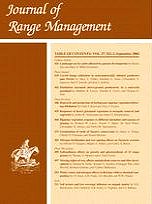Improving the sustainability of grazed rangelands requires that landowners adopt management innovations. We interviewed Utah ranchers to better understand innovation adoption among range livestock operators, and ultimately to suggest improvements in content and delivery of outreach activities. A 2-phase, qualitative social science research method was used to encourage discovery of information unlikely to be revealed via surveys and to expand the application of adoption theory to range livestock production. In line with previous research, innovation was related to full-time ranch operation, dependence on ranch income, anticipated future of the ranch, and extent of social networks. Barriers to innovation included inadequate time and resources, peer influences, and perceived drawbacks of potential innovations (e.g., difficulty of pilot-testing new grazing systems, or poor cost-benefit ratios of vegetation treatments). In contrast to previous studies, innovators were motivated by a desire to demonstrate stewardship to land managers and the public. Previously unidentified barriers included spatial characteristics of the ranch enterprise and perceptions about political/legal constraints.
How to translate text using browser tools
1 July 2004
Adoption of range management innovations by Utah ranchers
ELIZABETH A. DIDIER,
MARK W. BRUNSON
ACCESS THE FULL ARTICLE

Journal of Range Management
Vol. 57 • No. 4
July 2004
Vol. 57 • No. 4
July 2004




